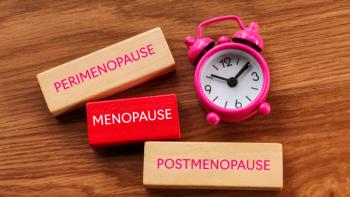
Pharmacy Practice in Focus: Health Systems
- March 2015
- Volume 4
- Issue 2
Antibiotic Treatment of Endocarditis
Patients who received ampicillin and ceftriaxone were less likely to have new onset renal failure.
Case
A 63-year-old woman hospitalized for native valve endocarditis with Enterococcus faecalis is receiving antibiotic therapy with ampicillin and gentamicin. On the fifth day of antibiotic therapy, the patient’s clinical course is complicated by acute kidney injury. Acute tubular necrosis is suspected secondary to gentamicin therapy. The medical team discontinues gentamicin and consults the clinical pharmacist for a recommendation for alternative antibiotic therapy for E faecalis endocarditis.
Answer
Staphylococcus, streptococcus, and enterococcus species are the most frequent pathogens implicated in infective endocarditis.1 Infections with Staphylococcus aureus continue to be the most common, while approximately 10% to 14% of endocarditis cases are caused by Enterococcus species. E faecalis accounts for 90% of cases of enterococcal endocarditis.2-4
The American College of Cardiology infective endocarditis guidelines, which were last updated in 2005, recommend 4 to 6 weeks of treatment with a combination of penicillin or ampicillin and an aminoglycoside for the management of enterococcal endocarditis. The utility of aminoglycosides in this setting is becoming increasingly limited. Enterococcus species exhibit a relative resistance to aminoglycosides, and the prevalence of high-level aminoglycoside resistance (HLAR) continues to increase.1 Furthermore, aminoglycosides are frequently discontinued due to adverse effects including nephrotoxicity.
The combination of ampicillin and ceftriaxone has demonstrated antimicrobial synergy and clinical effectiveness against E faecalis.5-7 Retrospective, observational studies have illustrated that, in comparison with antibiotic therapy with ampicillin and gentamicin, ampicillin and ceftriaxone has similar rates of mortality and recurrence of infection.6,7 This trend has been demonstrated in HLAR and non-HLAR isolates of E faecalis. Patients who received ampicillin and ceftriaxone were less likely to have new onset renal failure, and fewer patients had therapy discontinued secondary to adverse events.7
This patient experienced an acute kidney injury secondary to treatment with gentamicin. An appropriate alternative antibiotic regimen would include the addition of ceftriaxone 2 g every 12 hours to ampicillin at a dose adjusted for current renal function to complete the 4 to 6 week course of treatment. This strategy should provide comparable therapeutic effectiveness to the ampicillin and gentamicin combination while preventing further adverse clinical consequences to the patient.
Joseph S. Van Tuyl, PharmD, BCPS, is a PGY2 cardiology pharmacy resident at the University of North Carolina Hospital in Chapel Hill, North Carolina.
References
- Baddour LM, Wilson WR, Bayer AS, et al. Infective endocarditis: diagnosis, antimicrobial therapy, and management of complications: a statement for healthcare professionals from the Committee on Rheumatic Fever, Endocarditis, and Kawasaki Disease, Council on Cardiovascular Disease in the Young, and the Councils on Clinical Cardiology, Stroke, and Cardiovascular Surgery and Anesthesia, American Heart Association: endorsed by the Infectious Diseases Society of America. Circ. 2005;111:e394-e434.
- Murdoch DR, Corey GR, Hoen B, et al. Clinical presentation, etiology, and outcome of infective endocarditis in the 21st century: the International Collaboration on Endocarditis-Prospective Cohort Study. Arch Intern Med. 2009;169(5):463-473.
- Chirouze C, Athan E, Alla F, et al. Enterococcal endocarditis in the beginning of the 21st century: analysis from the International Collaboration on Endocarditis-Prospective Cohort Study. Clin Microbiol Infect. 2013;19(12):1140-1147.
- Selton-Suty C, Celard M, Le Moing VL, et al. Preeminence of Staphylococcus aureus in infective endocarditis: a 1-year population-based survey. Clin Infect Dis. 2012;54(9):1230-1239.
- Gavalda J, Torres C, Tenorio C, et al. Efficacy of ampicillin plus ceftriaxone in treatment of experimental endocarditis due to Enterococcus faecalis strains highly resistant to aminoglycosides. Antimicrob Agents Chemother. 1999;43:639-646.
- Gavalda J, Len O, Miro JM, et al. Brief communication: treatment of Enterococcus faecalis endocarditis with ampicillin plus ceftriaxone. Ann Intern Med. 2007;146(8):574-579.
- Fernandez-Hidalgo N, Almirante B, Gavalda J, et al. Ampicillin plus ceftriaxone is as effective as ampicillin plus gentamicin for treating Enterococcus faecalis infective endocarditis. Clin Infect Dis. 2013;56(9):1261-1268.
Articles in this issue
over 10 years ago
COPD: Improving Disease Managementover 10 years ago
Cyramza by Eli Lilly and Companyover 10 years ago
Population Health Managementover 10 years ago
The Finish Line for Provider StatusNewsletter
Stay informed on drug updates, treatment guidelines, and pharmacy practice trends—subscribe to Pharmacy Times for weekly clinical insights.















































































































































































































